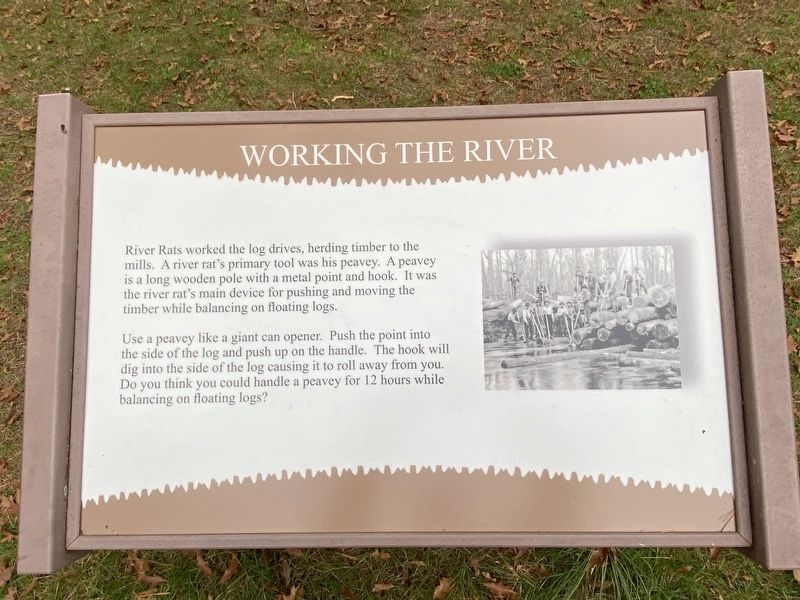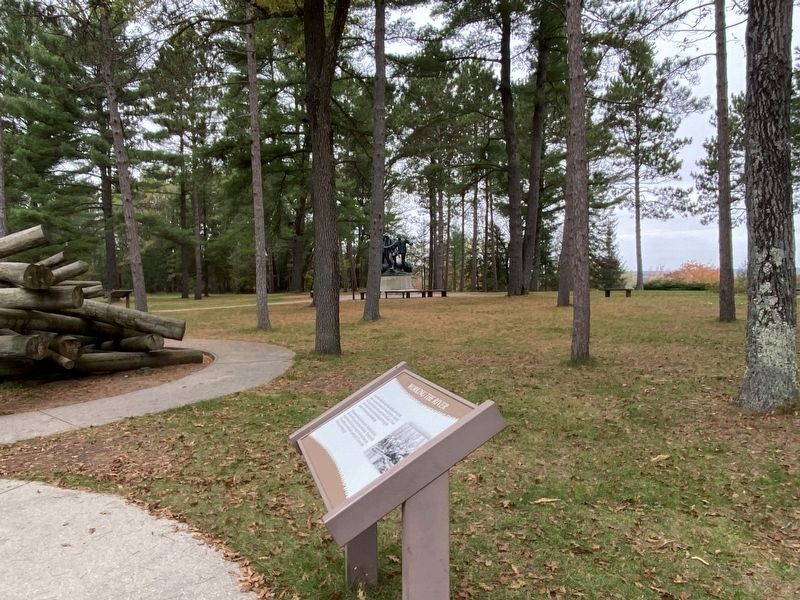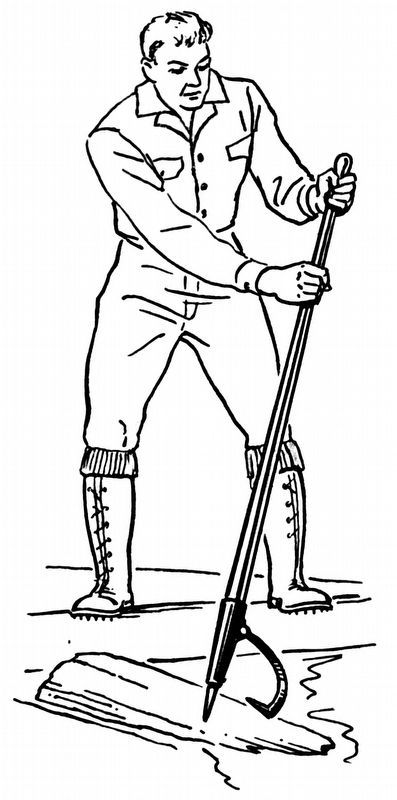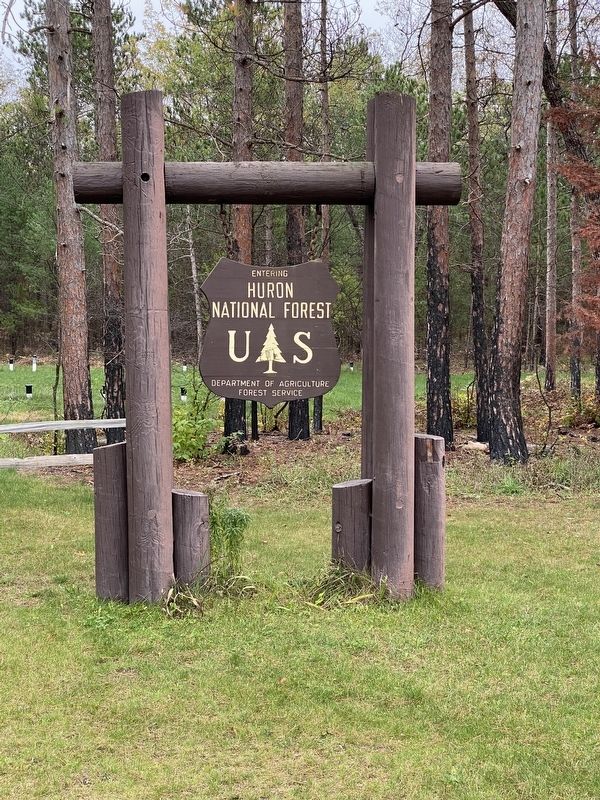Oscoda in Iosco County, Michigan — The American Midwest (Great Lakes)
Working the River
Use a peavey like a giant can opener. Push the point into the side of the log and push up on the handle. The hook will dig into the side of the log causing it to roll away from you. Do you think you could handle a peavey for 12 hours while balancing on floating logs?
Topics. This historical marker is listed in these topic lists: Horticulture & Forestry • Parks & Recreational Areas • Waterways & Vessels.
Location. 44° 26.108′ N, 83° 37.422′ W. Marker is in Oscoda, Michigan, in Iosco County. Marker can be reached from Monument Road, 0.2 miles north of West River Road. Marker is located near the Lumberman's Monument Visitor Center. Touch for map. Marker is at or near this postal address: 5401 Monument Road, Oscoda MI 48750, United States of America. Touch for directions.
Other nearby markers. At least 8 other markers are within walking distance of this marker. Jam Below! (here, next to this marker); Legacy (a few steps from this marker); At The Rollway (a few steps from this marker); Symbols of Law and Order (a few steps from this marker); Pictures From the Past (a few steps from this marker); History of Lumbermans Monument (a few steps from this marker); Lumberman's Monument (a few steps from this marker); Moving the Load (a few steps from this marker). Touch for a list and map of all markers in Oscoda.
Also see . . . Cant Hook. Excerpt:
A peavey is generally from 30 to 50 inches (0.76 to 1.27 metres) long, with a metal spike at the end. The spike is rammed into a log, then a hook (at the end of an arm attached to a pivot a short distance up the handle) grabs the log at a second place. Once engaged, the handle gives the operator leverage to roll or slide or float the log to a new place. The peavey was named for blacksmith Joseph Peavey of Upper Stillwater, Maine, who invented the tool as a refinement to the cant hook in the 1850s.(Submitted on February 22, 2023, by J.T. Lambrou of New Boston, Michigan.)
Credits. This page was last revised on February 26, 2023. It was originally submitted on February 22, 2023, by J.T. Lambrou of New Boston, Michigan. This page has been viewed 41 times since then and 10 times this year. Photos: 1, 2, 3, 4. submitted on February 22, 2023, by J.T. Lambrou of New Boston, Michigan. • J. Makali Bruton was the editor who published this page.



